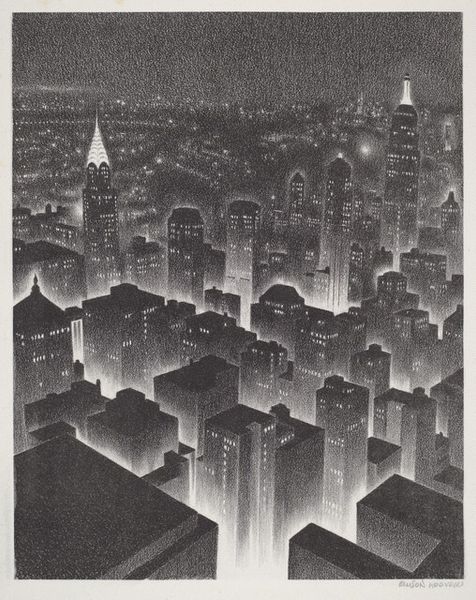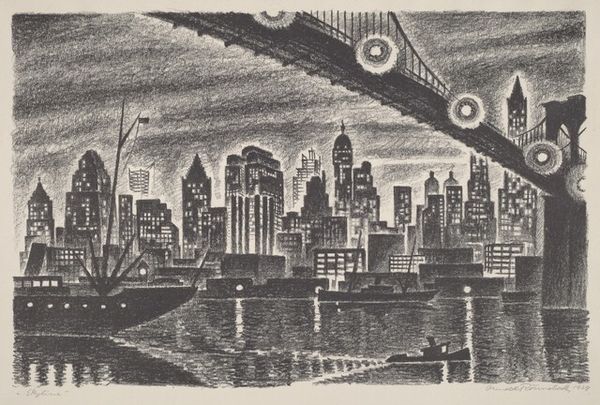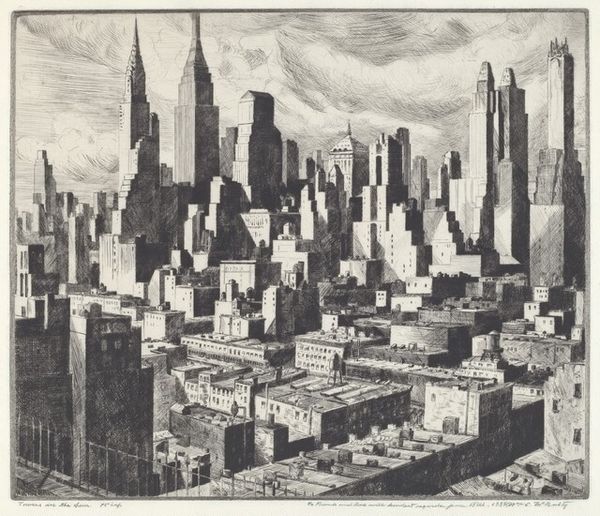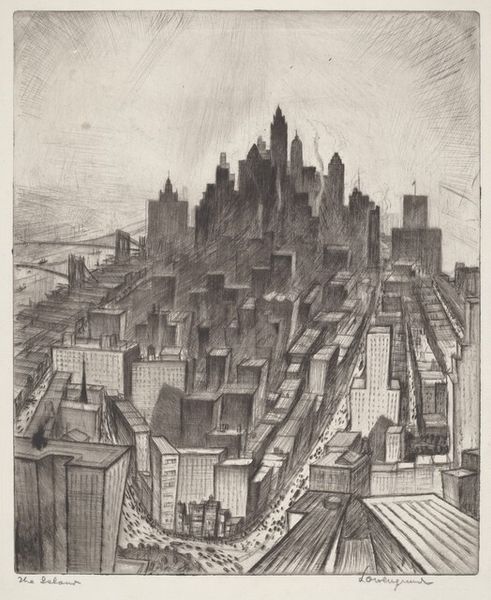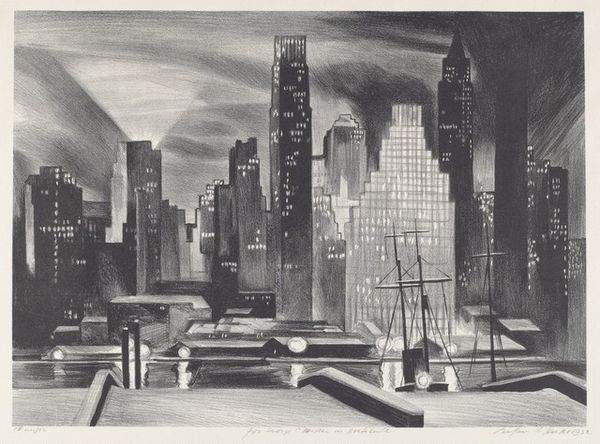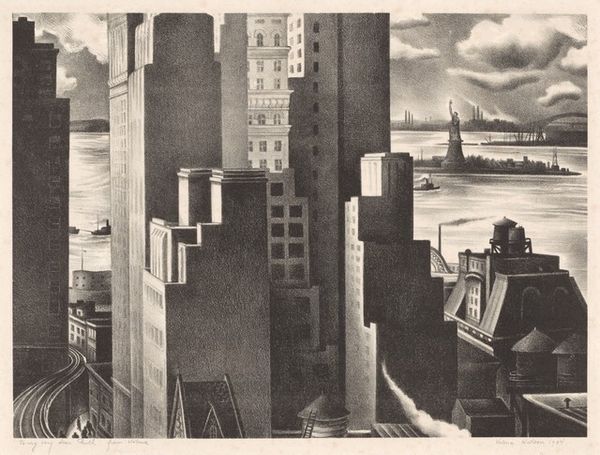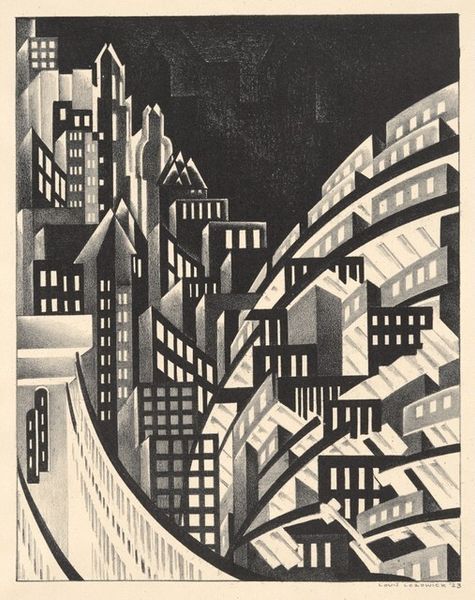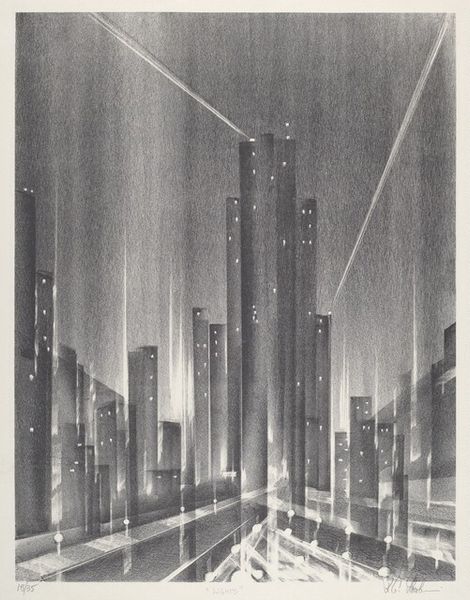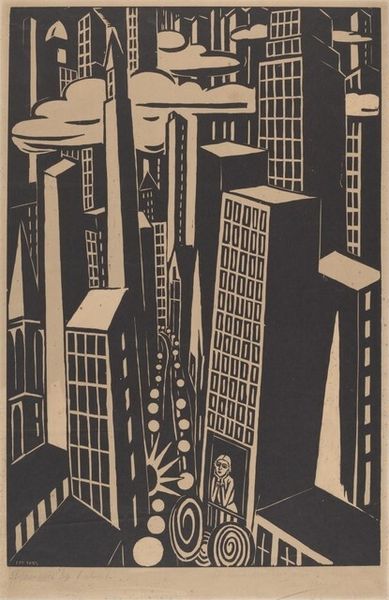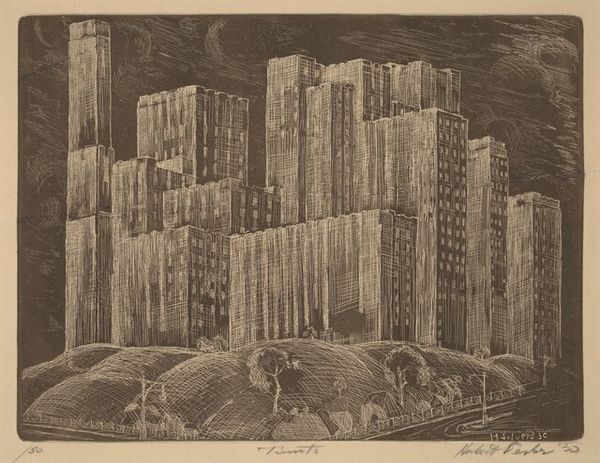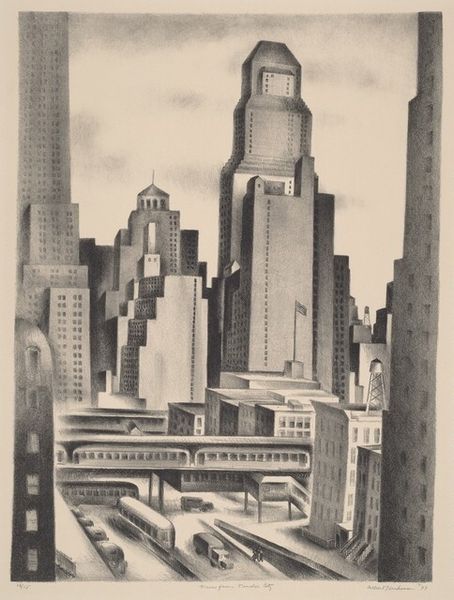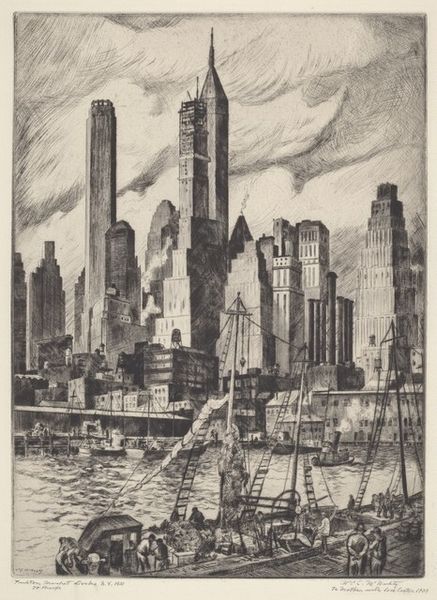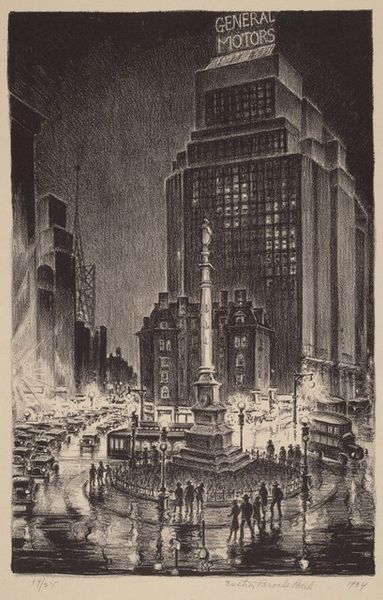
drawing, print, etching
#
drawing
# print
#
etching
#
cityscape
#
modernism
#
realism
Dimensions: image: 210 x 352 mm paper: 295 x 467 mm
Copyright: National Gallery of Art: CC0 1.0
Editor: This is Nils Paul Larsen's "Evening Manhattan," an etching from around 1945. The city almost seems to melt into the sky, it gives off a lonely, almost dystopian vibe. What do you see in this piece? Curator: I see a visual representation of power, but one laced with vulnerability. The towering skyscrapers, rendered in etching, a medium itself suggesting historical weight, evoke the ambitions of mid-20th-century capitalism. But the hazy, almost dissolving quality disrupts any sense of solid authority. Consider the historical moment: 1945, the end of WWII, a moment of both triumph and immense loss. How might that have impacted Larsen's portrayal of American ambition? Editor: So, you're saying the hazy effect, the way the buildings seem to drip downwards, could be reflecting the anxieties and uncertainties of the post-war era? Curator: Precisely. And think about Manhattan itself – an island, both geographically and, arguably, culturally. It's a symbol of American identity, a melting pot constantly redefining itself, but always grappling with the shadows cast by its own aspirations. This blurring between strength and fragility is vital to understanding the complex relationship between power, place, and identity within this cityscape. Who gets to build these structures and who has to live under the shadow of their greatness? Editor: It's like the etching technique itself reinforces the idea of a layered history, of something built up over time and slowly eroding. I hadn't considered the impact of WWII anxieties, how interesting! Curator: Yes! The choice of medium adds another dimension to the work's significance. It invites us to explore the complex interplay of progress and decay, achievement and alienation. We’re also prompted to reflect on our own positionality. Editor: That’s given me a whole new perspective on it, thank you! Curator: And you’ve helped me see it with fresh eyes, thinking about technique as symbolic disintegration.
Comments
No comments
Be the first to comment and join the conversation on the ultimate creative platform.
